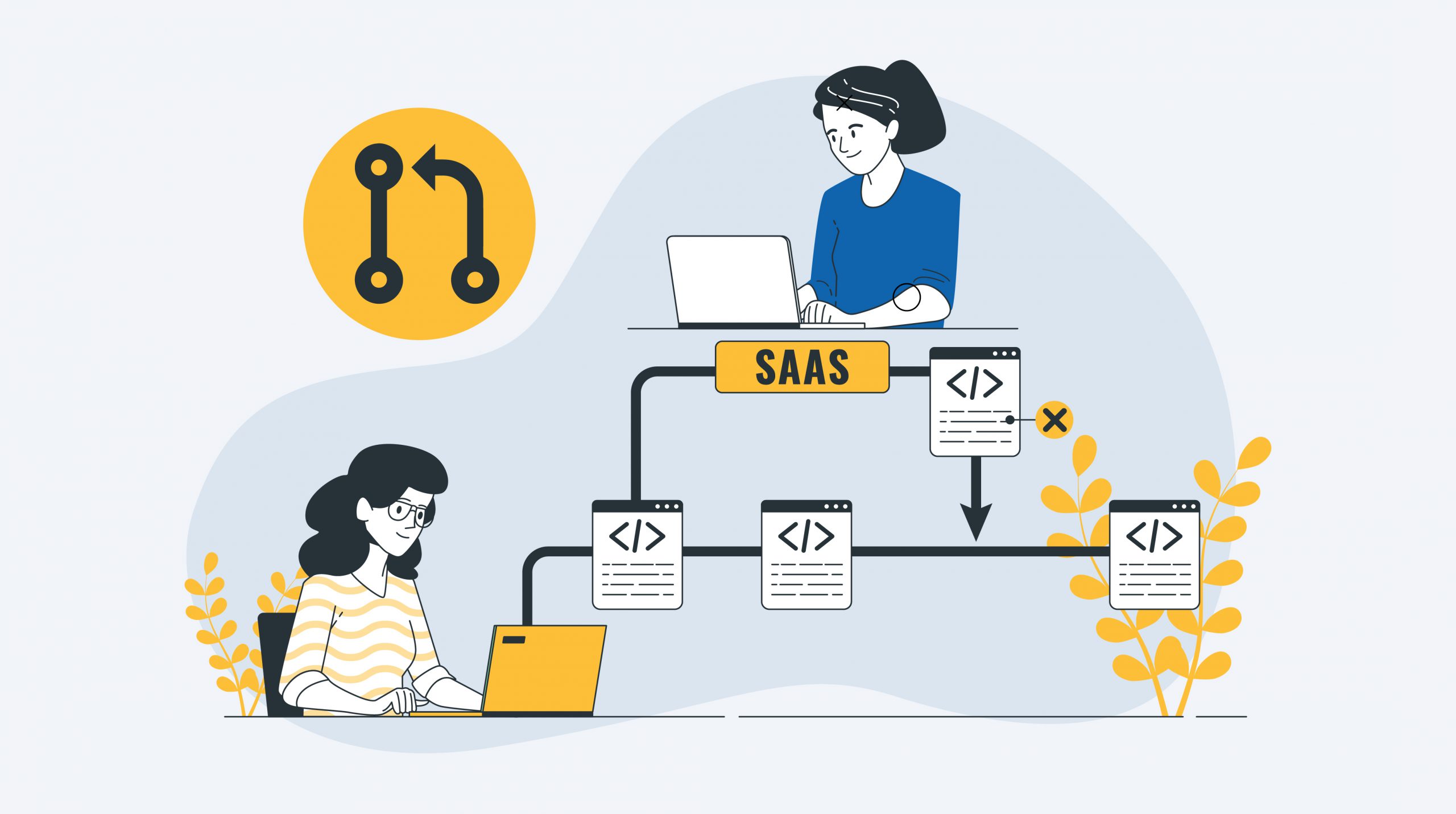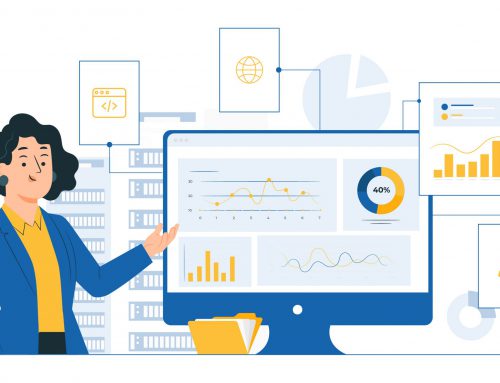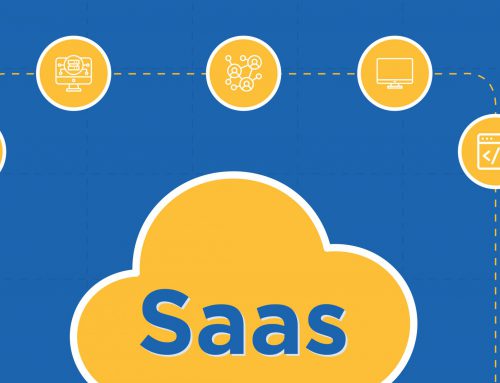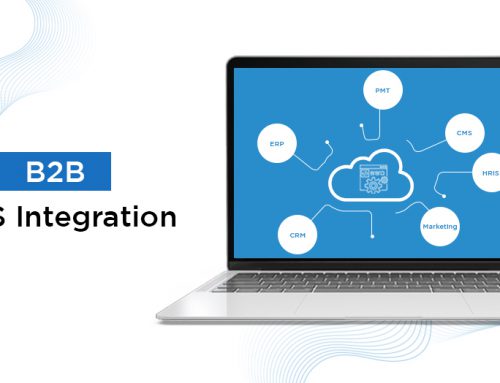Table of Contents
In today’s digital landscape where almost everything is just one click or one tap away- will you opt for installation, version update, and maintenance of the software? It will be hard for any of us to remember about the last licensed version software we used. Owing to its several technical and non-technical advantages businesses are resorting towards cloud-based Software as a Service (SaaS) application development rather than using traditional license model software.
Software as a Service (SaaS) delivers on-demand computing services through web-based applications. The SaaS development company can help businesses eliminate the burden of overhead and maintenance costs by providing objective SaaS solutions. Building a SaaS product has become a fundamental requirement for an entire business spectrum of all sizes for improved scalability, accessibility, and reliability
According to Fortune Business Insights, with a CAGR of 18.4%, the SaaS market is expected to surge from $317.55 billion in 2024 to $1,228.87 billion by 2032 globally.
SaaS application development company follows a relatively modern approach to product development making it robust and advanced in terms of technicality, features, and performance. But, why SaaS application development service providers are becoming the priority of businesses? What are the steps for SaaS application development? Let’s delve into more details about SaaS application development with this article.
What Is Software as a Service (SaaS)?
Software hosted and maintained by a service provider and accessed by users over the Internet is defined as a Software as a Service (SaaS) application. The SaaS development company offers subscription-based on-demand SaaS services. The SaaS application doesn’t need to be installed locally on the user’s devices or upgraded hardware to make it compatible. It can be accessed via internet browsers or various APIs from connected devices benefitting users for hassle-free accessibility and maintenance.
Why Now Is The Time for SaaS Development?
According to Gartner, end users spend more on SaaS than any other public cloud service, and by 2027, more than 70% of enterprises will use industry cloud platforms to accelerate their business initiatives. More and more businesses are opting for SaaS application development as users have easy access to the internet and widespread usage of mobile devices has fueled the growth of SaaS products.
- Growing Market Demand: The needs of businesses are evolving with the digital landscape for flexibility and scalability for smooth business operations.
- Technological Advancement: Uninterrupted internet, robust cloud infrastructure, and advanced development tools made SaaS development lucrative and accessible.
- Remote Work Trends: Remote work trends elevated the demand for SaaS solutions for hassle-free collaboration and accessibility to tools with the internet from anywhere.
- Emergence Of AI/ML: Businesses are deploying Generative AI services in their systems to stay ahead of the curve and provide the best service and features to the users. To integrate Generative AI effectively, these businesses will require cloud solutions to address non-technical issues.
How SaaS Application Development Fuels Rapid Business Growth?
The emergence of B2B SaaS applications and B2C SaaS applications represent innovative solutions in the realm of software development, offering new opportunities for businesses and consumers alike.
💰 Reduced Costs
SaaS application development companies help businesses cut down application expenses. SaaS is a cost-efficient alternative as it doesn’t require large IT infrastructure that requires regular maintenance and monetary investment. SaaS application development enables secure and flexible systems for businesses of all sizes. With a subscription-based model, it involves lesser investment risks and reduced hardware expenses.
🚀 Flexibility
Businesses are opting for SaaS application development for unparalleled flexibility, customized features, personalized business solutions, and housing new users effortlessly. With SaaS application development it is possible to scale effortlessly without limiting the number of users. With the centralized management system, the SaaS development company facilitates smooth information sharing from any device. Simplified interfaces and tailored applications help streamline operations and let users access relevant data only to enhance efficiency, security, and safety.
🤝 Collaboration
SaaS development company facilitates collaborative work environments with its ability to let multiple users work simultaneously within the SaaS application. With ensured data integrity, data security, data accessibility, and flexibility, SaaS application development can provide centralized storage and application management.
🚀 Enhanced Customer Support
SaaS development company provides solutions to offer robust customer support and feedback mechanisms to enhance customer experience. With SaaS application development customers can access 24*7 support with multiple resources like tutorials and FAQs. The SaaS application development services businesses can receive valuable insights and timely assistance in improving overall SaaS performance and user experience.
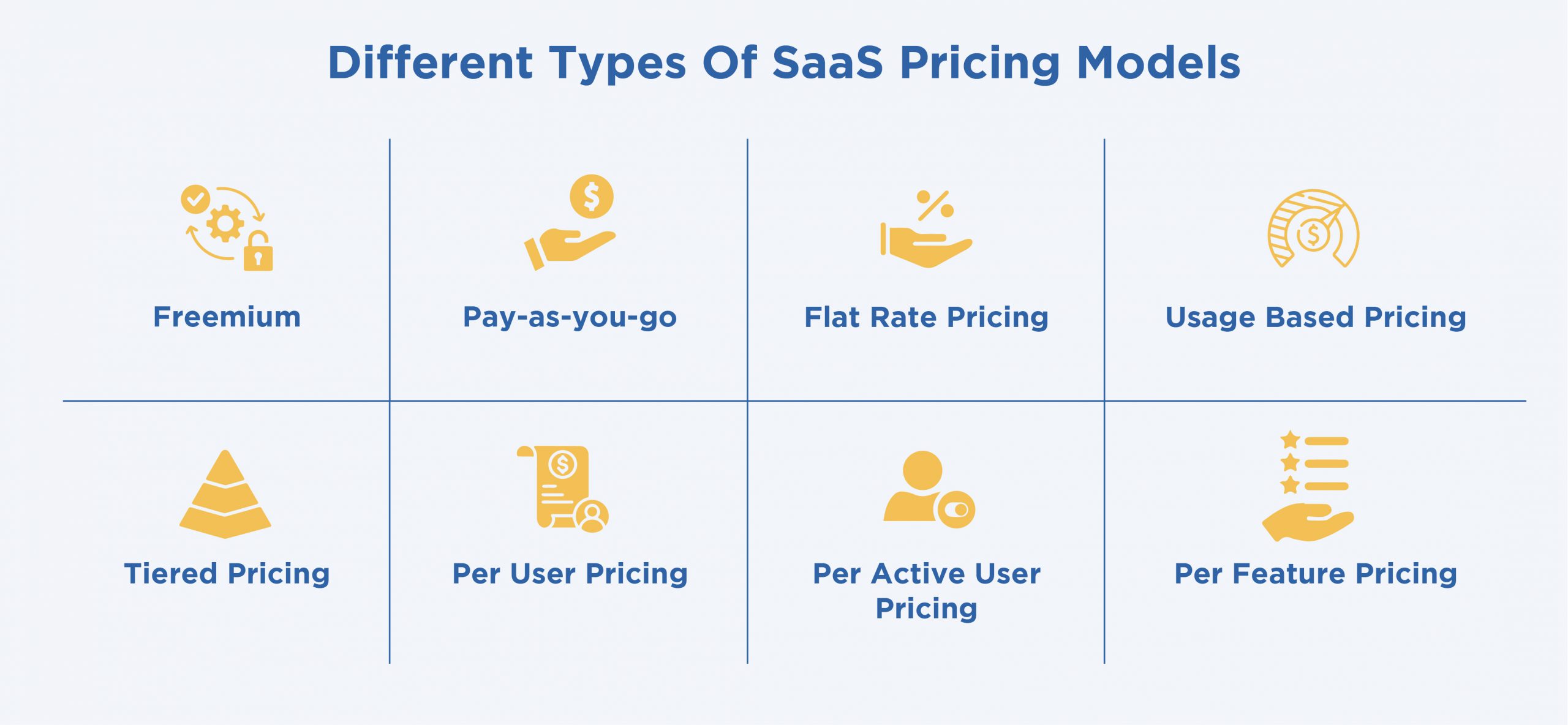
Benefits Of SaaS Application
There are several reasons to justify the benefits of SaaS products. Easy and quick selection and deployment of business applications are the foremost reasons. With the traditional approach, this has never been a simple task. Furthermore, SaaS offers enhancive and updated features for businesses enhancing the engagement of employees as well as users, eventually increasing productivity.
🔹 Cost Reduction
The on-premise solutions require license fees to be paid by the user. The company having SaaS application development enjoys flexibility with such fees with a subscription-based SaaS model. Customers can adjust such subscription fees based on many users, data storage, features, and other metrics. Furthermore, customers can reduce their expenses as there is no need to maintain or develop additional infrastructure for the software.
🔹 Recurring Revenue
The subscription model of SaaS facilitates businesses to generate recurring revenue from the users on a monthly or yearly basis. The revenue predictability gets stable once the business gets stable with the subscribers. It becomes easier for businesses to predict the cash flow by simply analyzing the number of active users and subscriptions.
🔹 Reduced Churn Rate
The number of customers discontinuing service or not resubscribing for any reason is considered the churn rate referring to the annual retention rate. The subscription model of SaaS offers continuous revenue making users subscribe to it over time and again. Users opt for SaaS applications as they can be accessed remotely making it more likely rather than traditional software.
🔹 Scalability
The SaaS application development enables easy modifications to sync with the evolving needs of any business. In case, your client base increases and you need to scale the SaaS product efficiency- it can be done easily without making any major changes or building digital infrastructure for it. Such a level of adaptability is not possible with traditional software, as it requires a sizeable investment in the initial stage.
🔹 Greater Mobility
The ongoing trend of working remotely demands SaaS application development for any company. The liberty and ability to work from home are essential to today’s work culture, predominantly after the COVID-19 pandemic. With SaaS products users can access software, data, documents, and anything integrated with the SaaS application from anywhere without staying glued to their office desktops.
🔹 Secure and Reliable
SaaS application development company emphasizes security and reliability compared to any on-premise software solution. With dedicated expert teams and strong disaster recovery plans SaaS ensures data recovery and availability even during outages. SaaS’s proactive approach offers robust security and reliability with uninterrupted software access.
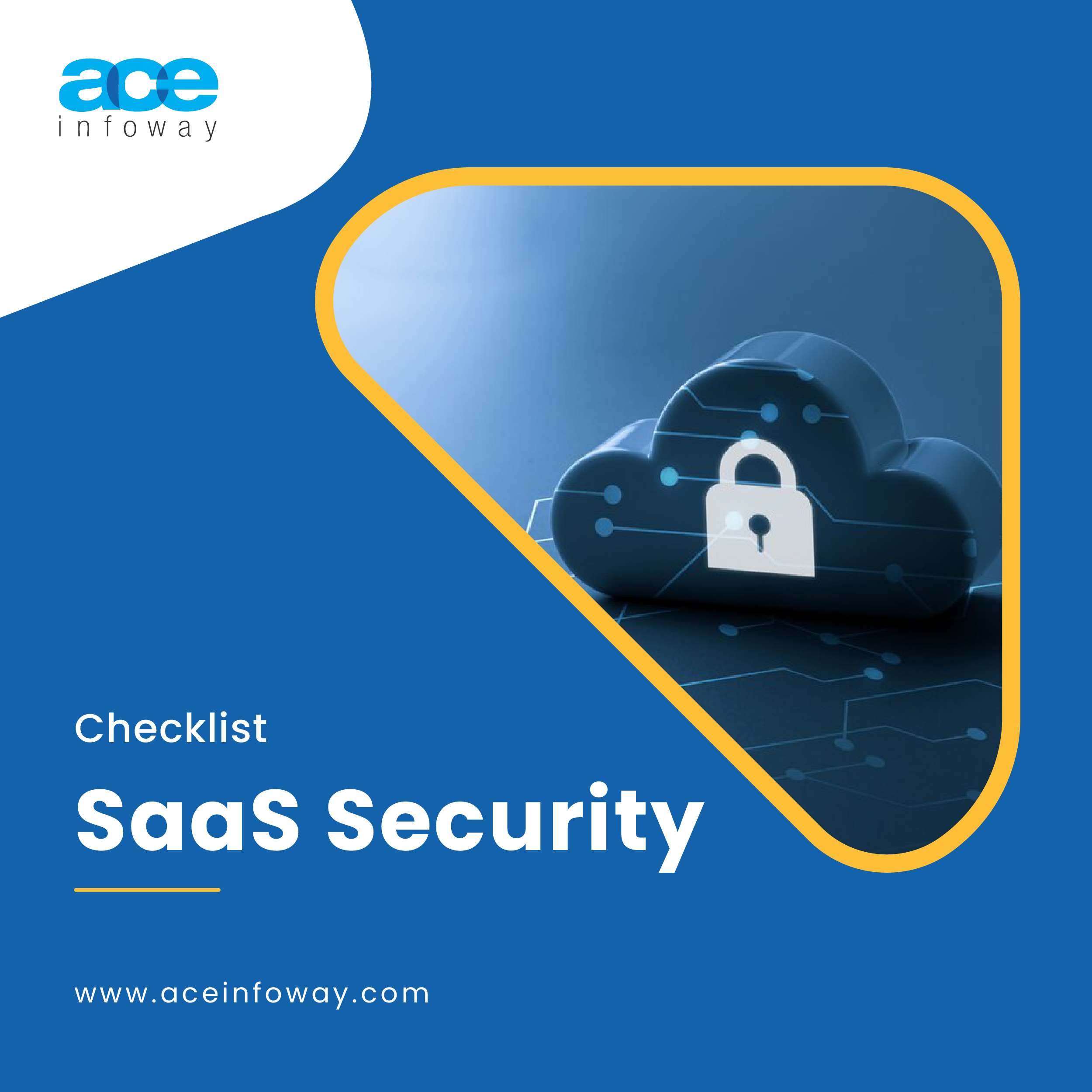
SaaS Security Checklist
Get your free copy
🔹 Easy Integration
Businesses can enhance their capabilities with easy and seamless integration of SaaS in their day-to-day business operations. Widely used software such as ERP systems or email when integrated with SaaS enhances productivity and user satisfaction ensuring smooth transition and compatibility.
Examples Of SaaS Products
| Product Name | Service Description |
|---|---|
| Salesforce | Salesforce provides customer relationship management software and solutions. |
| Slack | Slack provides a central hub for workplace collaboration, streamlining communication and teamwork in one platform. |
| Google Apps | From document management to email service to virtual meetings Google offers multiple SaaS apps. |
| Zoom | Zoom is a video conferencing tool used for remote meetings, collaboration, and much more. |
| Shopify | Shopify provides an e-commerce platform for businesses to establish online stores and sell products worldwide. |
| Adobe Creative Cloud | Offers a suite of software tailored to creative professionals, including tools for graphic design, video editing, web development, photography, and more. |
| Amazon Web Services | AWS provides on-demand cloud computing platforms and APIs. AWS offers tools such as the database, IoT, corporate apps, machine training, Storage, robotics, and many more. |
| Netflix | Netflix is a subscription-based video-on-demand over-the-top streaming service provider. |
Develop A Robust SaaS Product Considering These Points
SaaS development is a complex process involving multiple aspects and a whole team of developers. Before starting the development process of SaaS certain factors need to be addressed or considered for smooth SaaS development. Here are the things that need to be considered while and before developing a SaaS product:
- Objective Of SaaS Product
There needs to be a clear objective behind developing the SaaS product. For whom you are building the product and how it will help your target audience with its features and solutions. Apart from that, there needs to be a clear understanding of what challenges the SaaS product you are developing will address.
- Technology Stack
Selecting a tech stack for your SaaS application is comparable to selecting the building materials for a house. The technology stack is the foundation for any SaaS application development company. In the initial stage of the SaaS application development services provider will need multiple tools to build the platform’s client-facing components, such as HTML + CSS and JavaScript frameworks. It is advised to seek advice from technical specialists to make any decision about the tech stack.
- Tenancy Model
For any SaaS application development services provider selecting a tenancy model is crucial. It can be referred to as how resources are shared among multiple users or tenants on the same software platform. Primarily, there are three types of tenancy models- single tenancy, multi-tenancy, and hybrid tenancy. In single tenancy, the user has their instance of the software, offering high customization with higher costs. With multi-tenancy, users share a single instance with reduced costs and maintenance having limited customization potential. The hybrid tenancy is a combination of both tenancy models, allowing for varying levels of customization and resource sharing.
- Pricing Strategy
The pricing strategy of any SaaS solution directly impacts the ROI, cash flow, customer acquisition, market positioning, and the overall financial stability of the business. Any SaaS application development company needs to have a well-defined pricing model for enhancing customer retention and acquisition rates to meet market expectations.
- Choosing The Right Development Team
Hiring freelancers or having an in-house team are the two options available for SaaS application development. With freelancers one can face reliability concerns and managing an in-house team can be tedious and expensive. The best option is to outsource SaaS software development, it is cost-effective as well as an easy development process. Outsourcing SaaS application development can help you have a global talent pool on board with extensive experience.
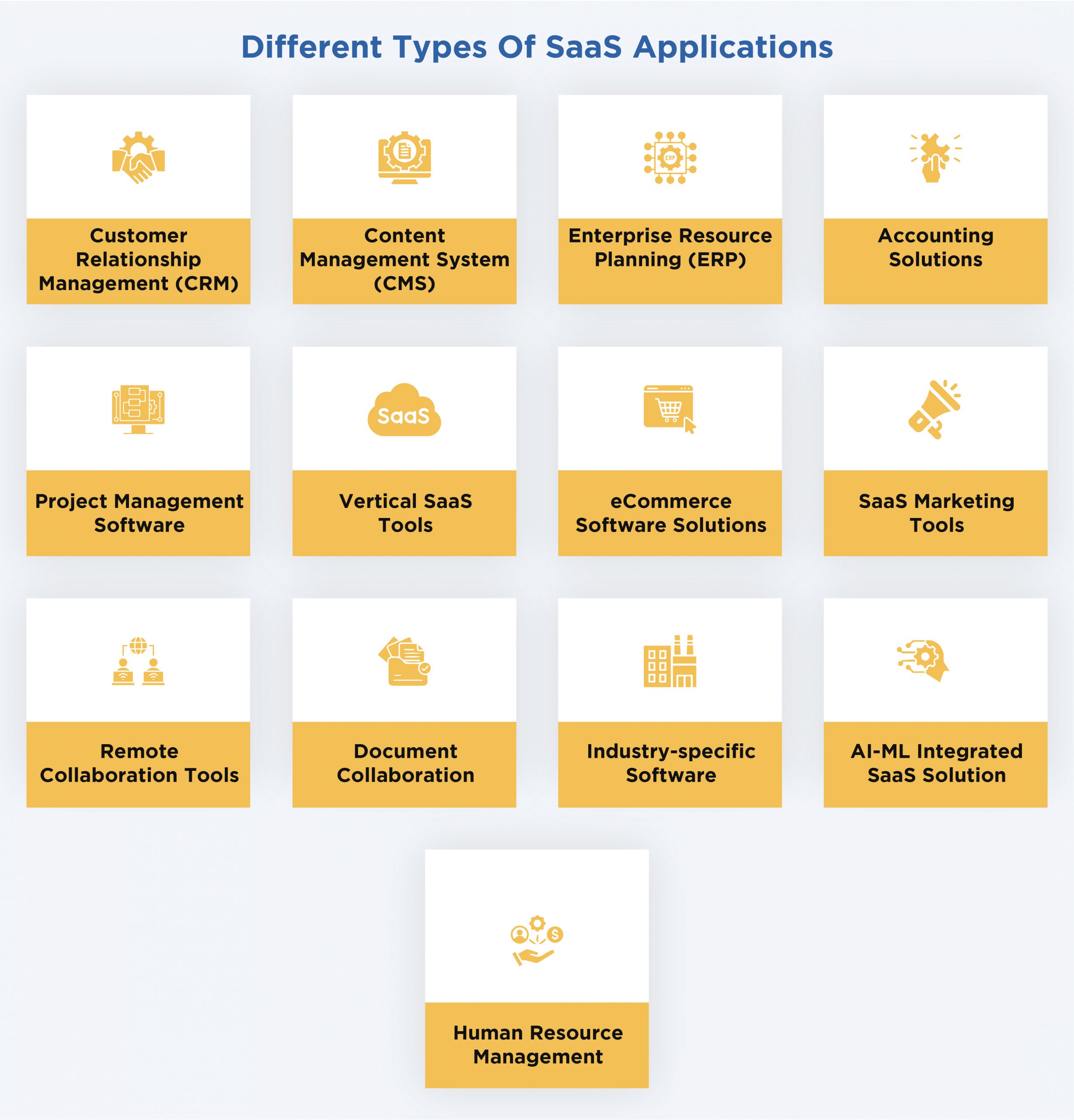
7 Steps To Develop a SaaS Application
SaaS application development is a complex and time-consuming process involving various factors, elements, and talent. SaaS application development companies need to follow a systemic approach consisting of the following important steps
- Validate SaaS Idea
Start by validating your SaaS concept to ensure its feasibility. Conduct thorough market research to identify your target audience, understand their needs, and analyze your competitors.
- Establish Business Model
Define a solid strategy for revenue generation and customer acquisition. Determine whether you’ll opt for a freemium model, subscription tiers, or a one-time payment structure.
- Define Technology Stack
Select the appropriate technologies for your frontend, backend, and database components. Consider scalability, maintenance requirements, and the availability of development resources when outlining your SaaS features and functionalities.
- Craft UX and UI
Prioritize simplicity, usability, and accessibility in your SaaS design. Develop wireframes and prototypes to visualize the user journey and interface design. Embrace the mobile-first approach, a prominent trend in SaaS development for 2024.
- Develop
Commence development based on your planned features and designs. Embrace agile methodologies for iterative development, testing, and refinement. Implement stringent security measures to safeguard user data and ensure compliance with relevant regulations like GDPR and HIPAA.
- Thorough Testing
Perform rigorous testing encompassing functional, performance, and security evaluations, along with user acceptance testing (UAT) to identify and rectify any issues.
- Deployment
Select a dependable cloud service provider for hosting your SaaS solution. Deploy the application and closely monitor its performance post-deployment.
Use Case
A mid-sized company’s HR department facing challenges with manual processes and disparate systems approached us for SaaS application development.
As a SaaS application development team, our team conducted thorough research about the HR department operations, and the number of employees, and understood what they expect from us to address the goals and objectives of the HR department.
We delivered a comprehensive cloud-based HR management SaaS platform that centralizes core HR functions, automates repetitive tasks, and empowers employees with self-service capabilities.
With real-time data visibility, advanced analytics, and seamless integration, our client experiences streamlined processes, improved accuracy, and enhanced employee satisfaction.
Our SaaS application development services facilitated informed decision-making, strategic workforce planning, and optimizing HR operations for the dynamic business environment of the company driving organizational success.
Conclusion
Software as a Service (SaaS) offers several benefits making it a popular choice for businesses of all verticals and sizes. From cost savings to increased collaboration, there are many reasons to consider for SaaS application development.
SaaS application development is a complicated process that requires many factors to work together. It is a rewarding business that can ensure stable revenue and scalability. If you want to tap into SaaS application development, contact us to discuss how we can assist you in turning your concepts into practical applications.









